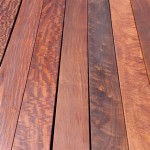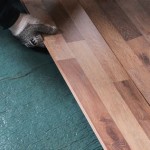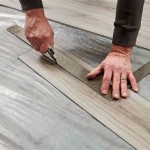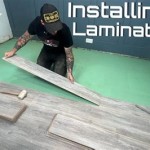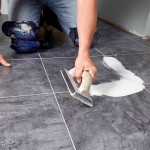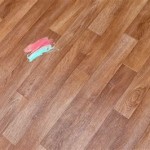How to Remove Carpet Glue From Wooden Flooring
Removing carpet glue from wooden flooring presents a significant challenge for homeowners and professionals alike. The adhesive used to secure carpets is often tenacious and designed for a permanent bond, making its removal potentially damaging to the underlying wood. Understanding the types of glue involved, preparatory steps, and appropriate removal techniques is crucial for effectively restoring the floor's original beauty and preventing lasting harm.
The process necessitates careful planning and execution, as improper methods can lead to further complications, such as scratching, gouging, or discoloration of the wood. This article provides a comprehensive guide to different techniques for removing carpet glue, while emphasizing the importance of safety and preventative measures to protect the integrity of the wooden floor.
Identifying the Type of Carpet Glue
Before attempting any removal process, it is essential to identify the type of adhesive used. Carpet glues vary in composition and strength, influencing the selection of the most effective removal method. Common types include:
Latex-Based Adhesives: These are water-based and generally less aggressive than other types, often found in older installations. They tend to be easier to soften and remove using heat or moisture.
Acrylic Adhesives: These are synthetic resin-based adhesives, offering good adhesion and water resistance. They can be more challenging to remove than latex adhesives, requiring stronger solvents or more intensive scraping.
Epoxy-Based Adhesives: These are two-part adhesives known for their exceptional strength and durability. They present the most significant removal challenge, often requiring specialized solvents and professional assistance to avoid damaging the wood.
Hot-Melt Adhesives: These are thermoplastic polymers applied in a molten state. While they cool to form a strong bond, they can often be softened again with heat, making them moderately difficult to remove.
Determining the glue type can often be achieved through visual inspection. Latex glues might appear as a thin, whitish residue, while acrylic adhesives may have a clear or yellowish tint. Epoxy adhesives are typically more rigid and may exhibit a hardened, resinous texture. Consulting with a flooring professional or referring to the carpet installation records, if available, can also aid in accurate identification.
Preparing for Glue Removal
Proper preparation is critical to minimize the risk of damage and ensure a safe and efficient removal process. This involves gathering necessary tools and materials, protecting the surrounding areas, and understanding safety precautions. Essential steps include:
Gathering Tools and Materials: The required tools and materials will depend on the chosen removal method. Some common necessities include:
- Plastic Scraper or Putty Knife: Use plastic to minimize scratching. Avoid metal tools initially.
- Heat Gun or Hair Dryer: For softening heat-sensitive adhesives.
- Mineral Spirits or Adhesive Remover: Compatible solvents for dissolving glue (always test in an inconspicuous area first).
- Soft Cloths or Rags: For applying solvents and wiping away residue.
- Safety Glasses and Gloves: To protect eyes and skin from chemicals and debris.
- Ventilation: Ensure adequate airflow throughout the work area.
- Drop Cloths or Plastic Sheeting: To protect adjacent walls and surfaces.
- Vacuum Cleaner: For removing loose debris and dust.
Protecting the Work Area: Cover nearby walls, baseboards, and furniture with drop cloths or plastic sheeting to prevent damage from solvents or debris. Secure the coverings with painter's tape to ensure they stay in place throughout the process.
Safety Precautions: Always wear safety glasses and gloves to protect against chemical exposure and potential injuries. Ensure adequate ventilation by opening windows or using a fan. When using solvents, avoid open flames or sparks, as many are flammable. Read and follow the manufacturer's instructions for all chemicals and tools being used.
Testing in an Inconspicuous Area: Before applying any solvent or heat to a large area, test it on a small, hidden section of the flooring to assess its impact on the wood finish. This helps determine if the chosen method causes discoloration, softening, or other undesirable effects. Allow the test area to dry completely and inspect it thoroughly before proceeding to a larger area.
Techniques for Removing Carpet Glue
Several methods can be employed to remove carpet glue from wooden flooring, each with varying degrees of effectiveness and potential risks. The choice of method depends on the type of glue, the type of wood, and the user's comfort level with different techniques.
Heat Application: Applying heat to the glue can soften it, making it easier to scrape away. This method is most effective for latex-based and hot-melt adhesives. A heat gun or hair dryer can be used, but extreme caution is necessary to avoid scorching the wood. Keep the heat source moving and avoid prolonged exposure to any single spot. Once the glue softens, carefully scrape it away with a plastic scraper.
Solvent Application: Various solvents can dissolve or weaken the adhesive bond, allowing for easier removal. Mineral spirits, adhesive removers specifically designed for carpet glue, and even certain citrus-based cleaners can be effective. Always test the solvent in an inconspicuous area first to ensure it does not damage the wood finish. Apply the solvent to the glue, allow it to dwell for the recommended time (as per the product instructions), and then scrape away the softened residue. Multiple applications may be necessary for stubborn areas.
Scraping: This method involves physically removing the glue with a scraper or putty knife. It is most effective when the glue is already softened by heat or solvents. Use a plastic scraper to minimize the risk of scratching the wood. Hold the scraper at a shallow angle and apply gentle, even pressure to lift the glue away. Avoid using excessive force, which can gouge or damage the wood surface. For particularly stubborn areas, a metal scraper may be used with extreme caution, ensuring it is kept flat against the wood and used with minimal pressure.
Sanding: Sanding is a more aggressive method that should be reserved for situations where other techniques have failed or where the flooring will be refinished anyway. Use a fine-grit sandpaper (120-grit or higher) and a sanding block or orbital sander. Apply light, even pressure and avoid sanding too deeply, as this can remove the wood's finish and potentially damage the wood itself. Vacuum up the sanding dust frequently to assess the progress and avoid scratching the surface. This method is best suited for removing thin layers of glue residue after the bulk of the adhesive has been removed by other means.
Steam Cleaning: Steam cleaning can be effective for loosening certain types of carpet glue, especially those that are water-soluble or heat-sensitive. The steam penetrates the glue, softening it and making it easier to scrape away. Use a steam cleaner with a narrow nozzle attachment and direct the steam at the glue residue for a few seconds at a time. Immediately follow up with a plastic scraper to remove the softened glue. Be careful not to saturate the wood with excessive moisture, as this can cause warping or other damage. Allow the floor to dry completely after steam cleaning.
Professional Assistance: In cases of extensive glue residue, difficult-to-remove adhesives, or valuable wooden flooring, it may be prudent to seek professional assistance. Flooring professionals have specialized tools, solvents, and expertise to remove carpet glue safely and effectively without damaging the wood. They can also assess the condition of the flooring and recommend appropriate repair and refinishing options.
Post-Removal Steps and Considerations
Once the carpet glue has been successfully removed, several post-removal steps are necessary to restore the floor's appearance and prevent future issues. These steps include:
Cleaning the Floor: Thoroughly clean the floor with a wood-floor cleaner to remove any remaining residue from the glue or solvents. Follow the manufacturer's instructions for the cleaner being used. Avoid using excessive water, which can damage the wood. Wipe the floor dry with a clean cloth.
Repairing Damage: Inspect the floor for any damage caused by the glue removal process, such as scratches, gouges, or discoloration. Minor scratches can often be repaired with wood filler or touch-up markers that match the wood's color. Deeper gouges may require professional repair. Discoloration may necessitate sanding and refinishing the affected area.
Refinishing the Floor: If the glue removal process has damaged the existing finish or if the flooring is old and worn, consider refinishing the floor. This involves sanding the floor to remove the old finish, applying a new stain (if desired), and sealing the floor with several coats of polyurethane or other protective finish. Refinishing can restore the floor's appearance and protect it from future damage.
Preventative Measures: To prevent future carpet glue issues, consider using alternative flooring options that do not require adhesive, such as floating floors or area rugs with non-slip pads. When installing carpet, opt for low-VOC adhesives that are easier to remove and less harmful to the environment. Properly prepare the subfloor before installing any flooring to ensure a strong and lasting bond, minimizing the risk of adhesive failure and the need for future removal.
Removing carpet glue from wooden flooring is a challenging but achievable task. By carefully identifying the type of glue, preparing the work area, selecting the appropriate removal method, and taking necessary safety precautions, homeowners and professionals can effectively restore the floor's beauty and prevent lasting damage. Remember that patience and attention to detail are crucial for achieving the best results. When in doubt, seeking professional assistance is always a wise decision to ensure the integrity and longevity of the wooden flooring.

Removing Glue Or Adhesive From Hardwood Floors The Speckled Goat

Flooring How Can I Remove Carpet Adhesive From Hardwood Floors Home Improvement Stack Exchange

Removing Glue Or Adhesive From Hardwood Floors The Speckled Goat

How To Remove Carpet Glue From Hardwood Floors Servicewhale

How To Remove Carpet Glue From Wood Concrete Floors Ultimate Diy Guide

How To Remove Carpet Glue Goo Gone

How To Remove Glue From Wood Floors Pete S

Removing Glue Or Adhesive From Hardwood Floors The Speckled Goat

3 Fast Easy Ways To Remove Carpet Glue From A Wood Floor

Removing Carpet Glue Off Wood With Cooking Oil I Tried It And Let Soak For About 10 Minutes Did All Of This In A Half Hour No Harsh Chemicals
See Also
